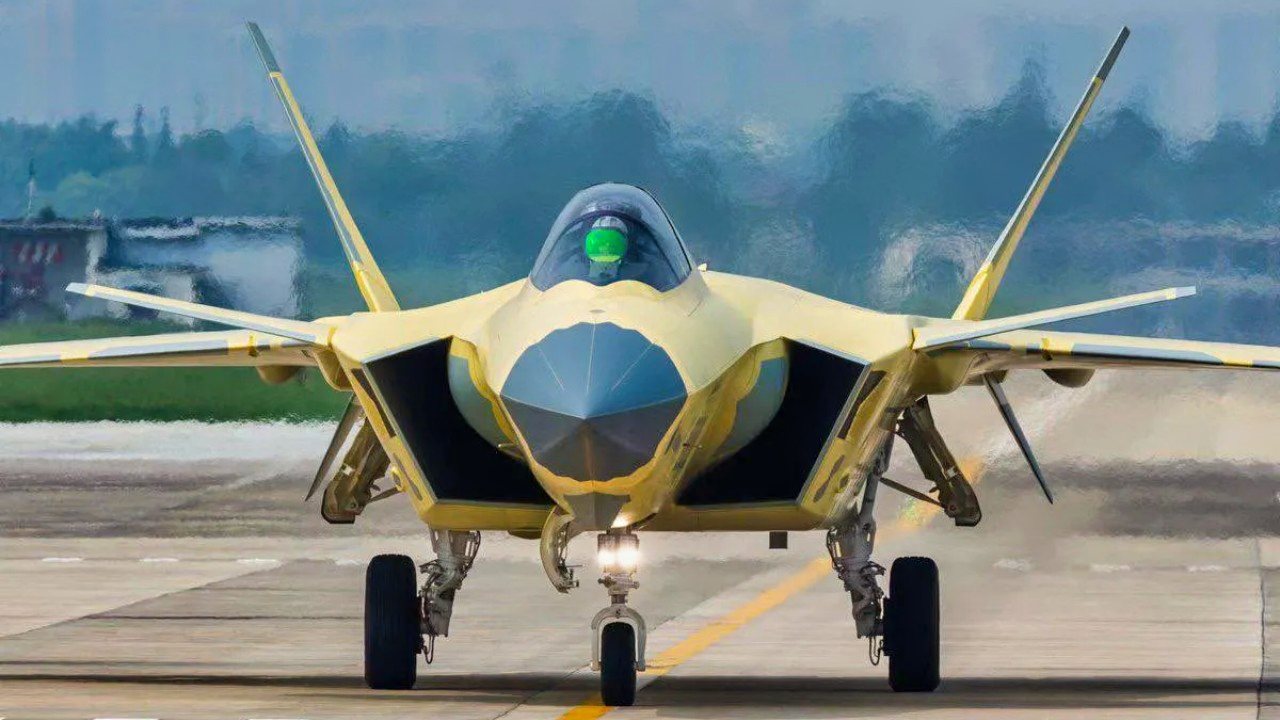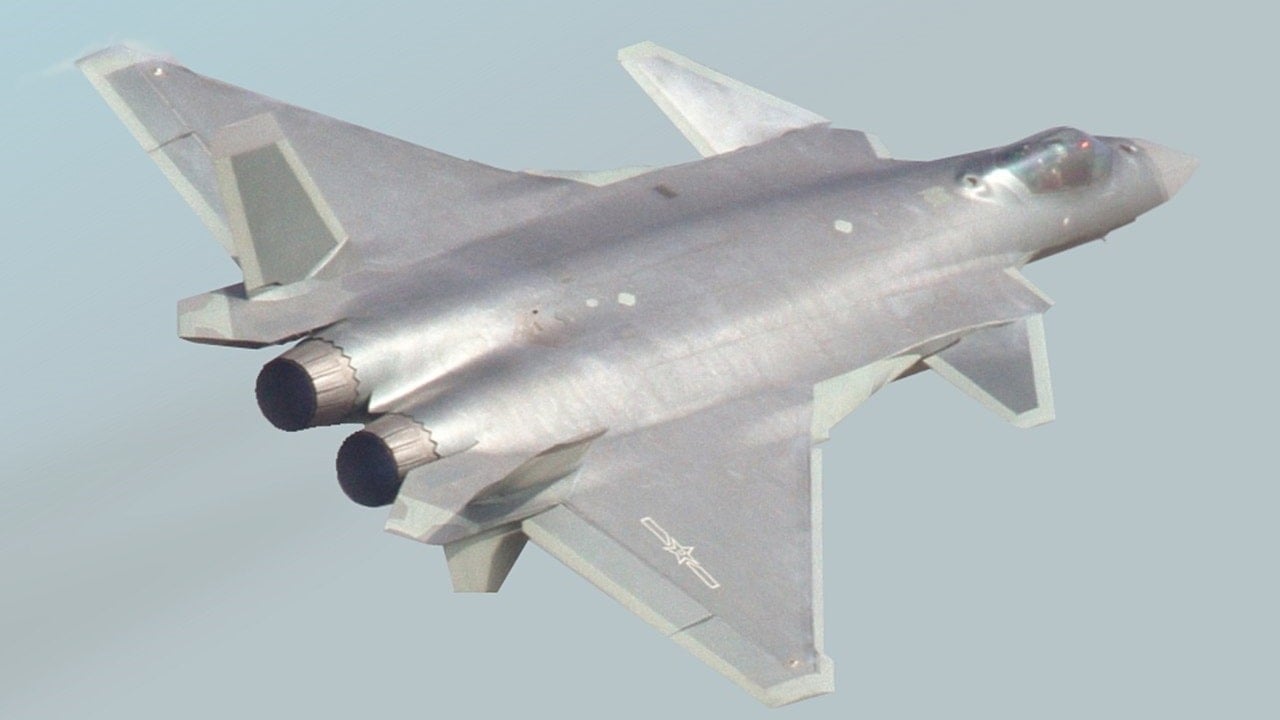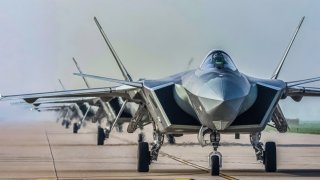China’s Growing J-20 Fleet: Is U.S. Air Dominance in Jeopardy?
China’s military expansion is accelerating, with its People’s Liberation Army-Air Force (PLAAF) expanding its fleet of J-20 fifth-generation stealth fighters to twelve brigades. This rapid growth, which saw over seventy new aircraft added in the past year, has closed the gap with the U.S. F-35 fleet.
What You Need to Know: China’s military expansion is accelerating, with its People’s Liberation Army-Air Force (PLAAF) expanding its fleet of J-20 fifth-generation stealth fighters to twelve brigades. This rapid growth, which saw over seventy new aircraft added in the past year, has closed the gap with the U.S. F-35 fleet.

-The J-20, reportedly benefiting from stolen F-35 technology, is now replacing older Chinese jets, making it a formidable presence.
-As China advances its air capabilities, regional powers like Japan and South Korea are increasing their military investments, while the U.S. seeks to maintain its edge with plans for a sixth-generation fighter.
U.S. Military Wary as China’s J-20 Fighter Fleet Swells to New Heights
China’s ambitious efforts at military expansion are becoming ever more obvious. The U.S. is taking notice, and inevitably, measuring themselves relative to the expanding Chinese forces. Concerning air power, the U.S. has long enjoyed a qualitative and quantitative edge. But China’s J-20 stealth fighter fleet is cutting into the U.S. advantage.
According to a report in Janes, the People’s Liberation Army-Air Force (PLAAF) has completed a rapid expansion of its J-20 fifth-generation fighter stock; China now has twelve J-20 brigades.
“Janes notes this marks a sharp increase from just forty aircraft in early 2022, with over seventy inducted in the past year alone, judging on assessments made from recent satellite imagery,” Asia Times reported.
Matching the F-35
The J-20 was designed to match the American’s F-35 Lightning II Joint Strike Fighter. The F-35 is notable as a fifth-generation platform that has been heavily exported. With an ultra-low radar cross-section, the F-35 has provided the US and its allies with a stealth option. In addition to stealth technology, the F-35 is renowned for its data fusing and networking abilities, which allow for unparalleled situational awareness.
Curiously, the J-20 resembles the F-35.
Coincidence? Maybe, but probably not.
Chinese spies are believed to have stolen technical information relating to the F-35 program, which was then incorporated into the development of the J-20.

Regardless, the Chinese have now developed, and are now producing, a fifth-generation fighter in quantities deserving of consideration. “Moreover, Janes says the PLAAF is also replacing older J-11s and Su-27s with J-20s, supported by advancements in domestic engine technologies like the WS-15 that have reduced China’s reliance on Russian-made engines,” Asia Times reported.
Remarkably, China now appears to have more fifth-generation stealth fighters than the Americans, who enjoyed a head start as the first country to break through the fifth-generation threshold.
Expect China’s investment in fifth-generation technology to cause reciprocating efforts from other regional powers, like the U.S., Japan, and South Korea.
The U.S. has plans to develop a sixth-generation fighter that, in theory, would give the Americans a distinct edge over the J-20. Known as the Next Generation Air Dominance (NGAD), America’s sixth-generation fighter program was recently paused over cost-related concerns. Still, the Americans will likely be the first nation to cross the sixth-generation threshold; they have the world’s largest military budget, by a health margin, after all.
Japan, for their part, is working to develop a sixth-generation fighter known as the F-X. Built by Mitsubishi, perhaps best known for the World War II era Zero fighters, the F-X is planned for a 2035 introduction and could certainly add to the friction already building throughout the Indo-Pacific.
The Indo-Pacific is quickly becoming the world’s most consequential geopolitical flashpoint. Chinese revisionism, and a rapidly expanding military, are putting regional neighbors at ill ease. The US, long a stakeholder in the region, is taking steps to maintain influence in the critical region. Much of the US military strategy, and equipment stockpiling, is currently being recalibrated for a potential conflict with China, which would of course be catastrophic for all involved.
About the Author:
Harrison Kass is a defense and national security writer with over 1,000 total pieces on issues involving global affairs. An attorney, pilot, guitarist, and minor pro hockey player, Harrison joined the US Air Force as a Pilot Trainee but was medically discharged. Harrison holds a BA from Lake Forest College, a JD from the University of Oregon, and an MA from New York University. Harrison listens to Dokken.
Image Credit: Creative Commons and/or Shutterstock.


